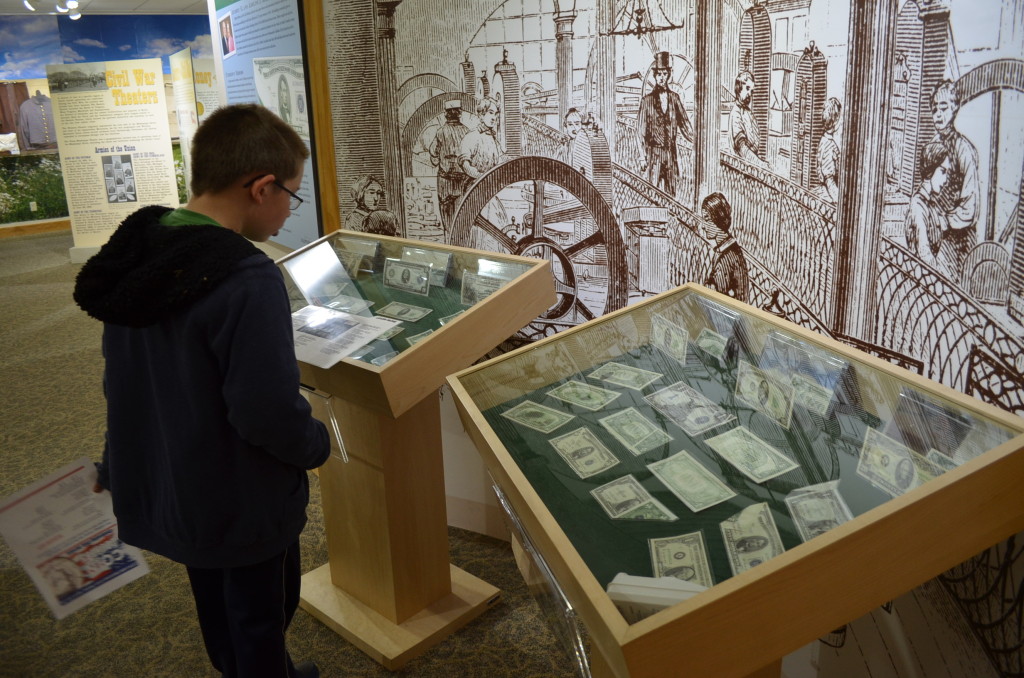
The American Numismatic Association Money Museum is located on the campus of Colorado College near downtown Colorado Springs. Here, Timmy is looking closely at the “error notes”, bills with mistakes.
On a day off of school on May 1st, the boys and I took a short trip down to Colorado College near downtown Colorado Springs to visit the American Numismatic Association Money Museum.
-
of, relating to, or consisting of coins, paper currency, and medals.
I figured I needed to define the term for you.
Anyway, the boys have had an obsession with money for a long time. Not making tons of money, but rather the history and manufacturing process. I think it started when we visited the Moneyville exhibit at Omaha’s Durham Museum in June 2009:

This is from our visit to the U.S. Mint’s “Moneyville” traveling museum exhibit in June 2009 at Omaha’s Durham Museum. The kids obsessed over money — the minting of money, the history of money, etc. — for months after this particular visit.
While the Moneyville exhibit catered to a variety of age groups, the Money Museum is definitely geared for older children. Like our visit to the Western Museum of Mining and Industry the week prior, this museum has a lot of reading and technical information that a younger elementary school child might struggle with.
The boys were given a short quiz when we paid our admission. If they answered all the questions correctly, they received a prize, which ended up being a newly-minted John F. Kennedy half-dollar coin from the Denver Mint.
The glass cases, in which most of the coin artifacts are housed, have a double-sided laminated sheet hanging on each one. The front side of each sheet has “more information” about what’s in the case. The back side is the legend for what’s in each case.
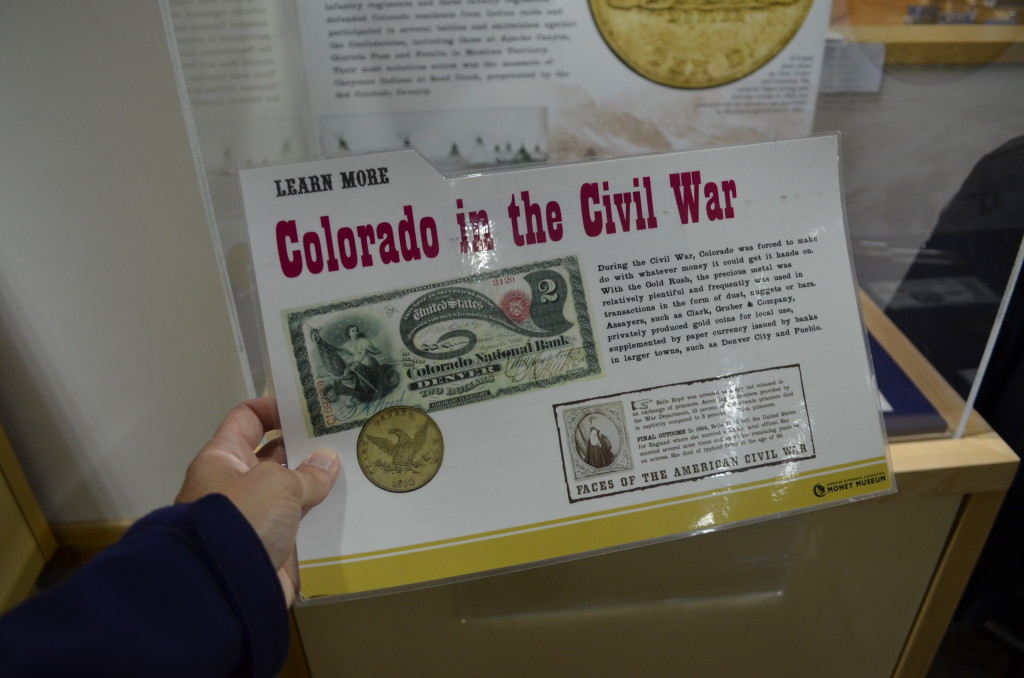
The front side of each sheet has “more information”. Like I said above, there’s a lot of reading at this museum.
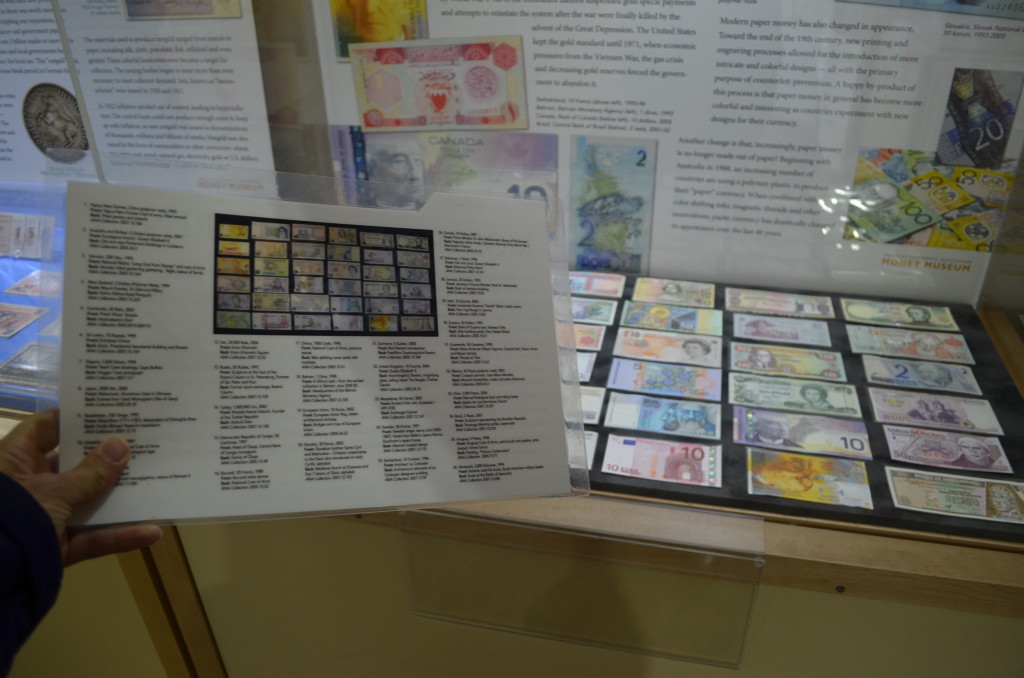
The back side serves as a legend for the artifacts. This one is spelling out the origin countries of each piece of paper money, and it also defines the national emblems and landmarks on each bill.
The boys explored most of the museum in about an hour, but spent the most time at the “Error Notes” collection. Someone collected, then donated, a large collection of “mistake money” that was printed. They enjoyed learning about everything that can go wrong in the paper money process.
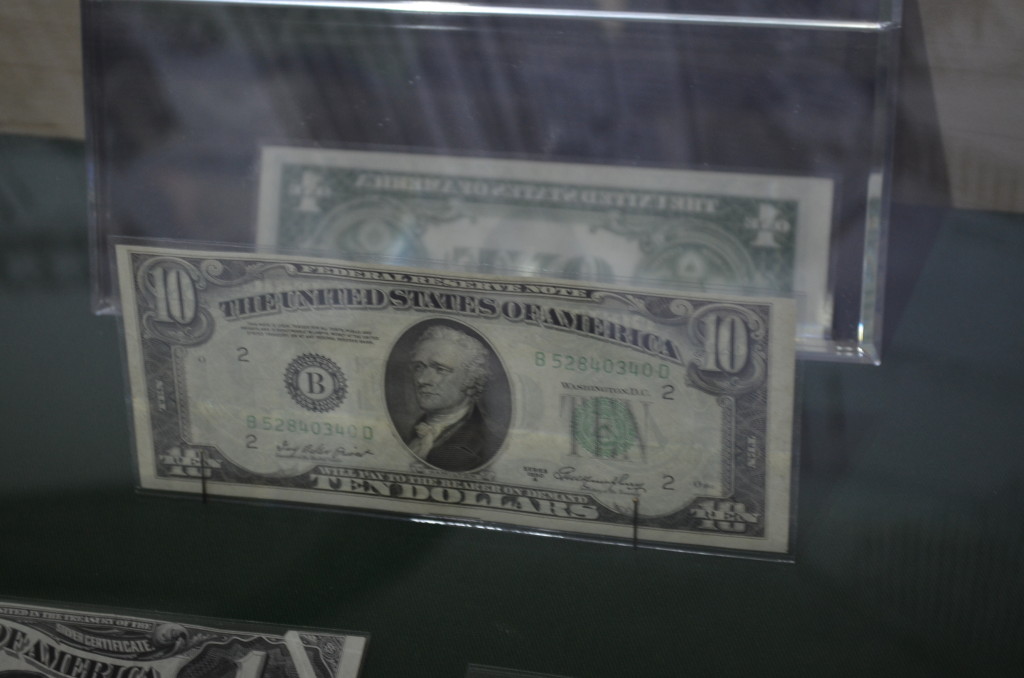
The glass cases had mirrors to show some of the bills that had one denomination on one side, and a completely different denomination on the other.
The top floor of the museum focuses on American money. While we were visiting, there was an expansive exhibit about money during the American Civil War. It was fascinating to learn about the Confederate States of America money process, since they had to start a minting/manufacturing process from scratch. And because the CSA was founded on the principle of states’ rights, individual states minted their own bills and coins, and it circulated along with the national-level money. Over the course of the war, the money lost value to the point it started to cost more to make the money than it was worth.
There’s also a large exhibit of gold coins as part of the Harry Bass Collection. The kids weren’t as interested in this, but I was.
The lower level of the museum features a new permanent exhibit about the history of money. I found this very interesting, but again, there was a lot of reading and viewing of glass cases, which wasn’t as interesting for the kids.
Also in the lower level is the Kids Zone, which has interactive activities for kids of all ages. The boys enjoyed the large magnetic board activities.
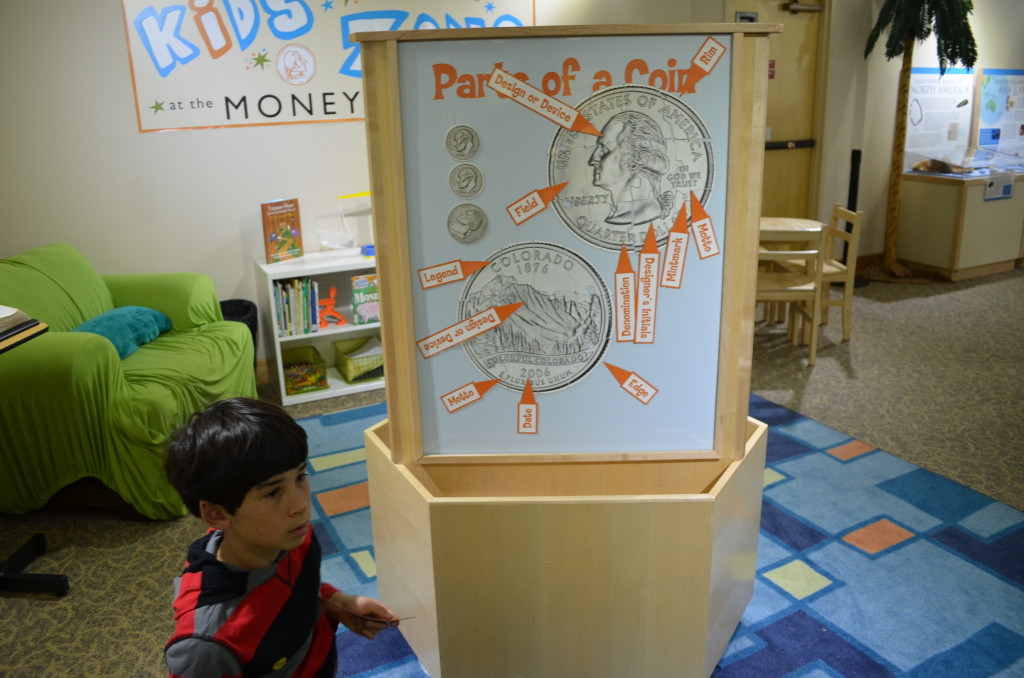
The boys assembled the obverse and reverse sides of the Colorado quarter as a puzzle, and then labeled the parts. The labeling information was featured in an exhibit elsewhere in the museum.
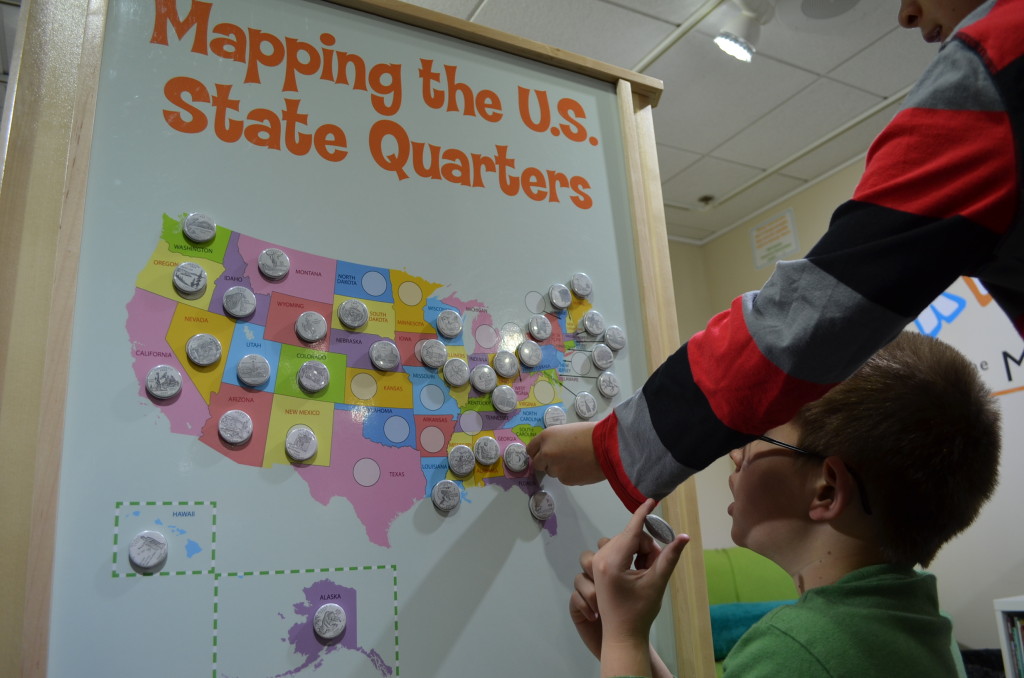
There were magnets of the 50 U.S. state quarters. The boys and I worked on this together. This was a great opportunity to teach the kids why the states chose the images they did for their quarters (such as Ohio’s quarter with the Wright Flyer on it).
The museum has armed guards walking around, and we were warned upon entering that jostling the glass cases could trigger alarms. Again, this might not be the best choice for preschool children. The Money Museum is a fun 1/2 day activity for kids who can read confidently. We spent about 75 minutes at the museum total. It’s located on 818 North Cascade Ave. on the campus of Colorado College. It’s open from 10:30am – 5pm on Tuesday – Saturday and admission is $5 for adults and FREE for children 12 and under. Senior and military discounts are available. Kids can do a quiz for a U.S. coin prize, and all kids also get to choose one foreign coin as a souvenir.

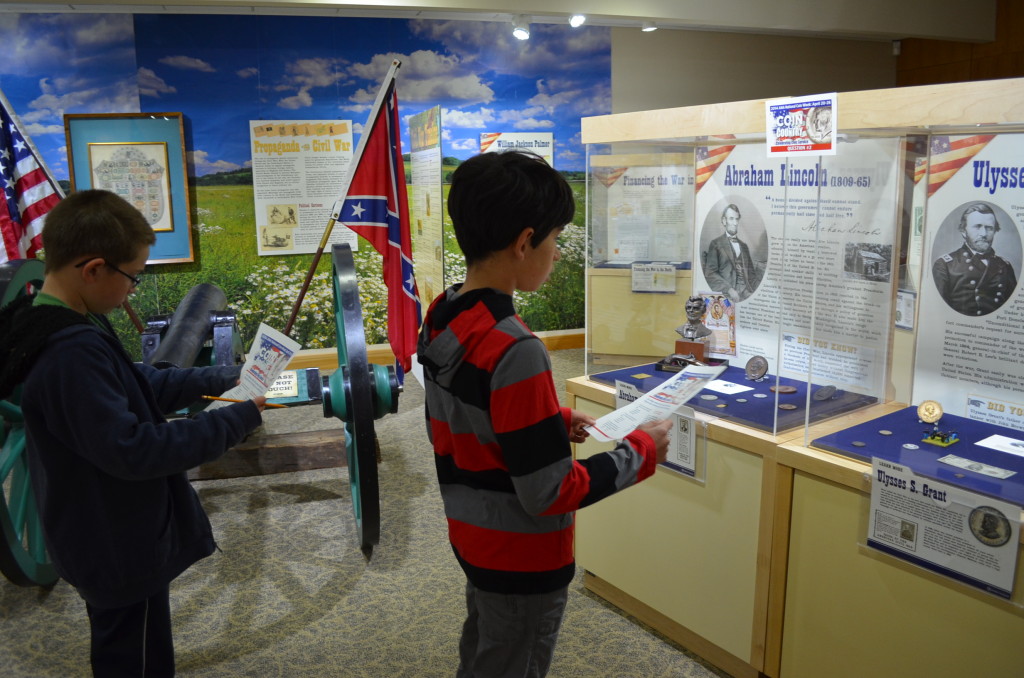
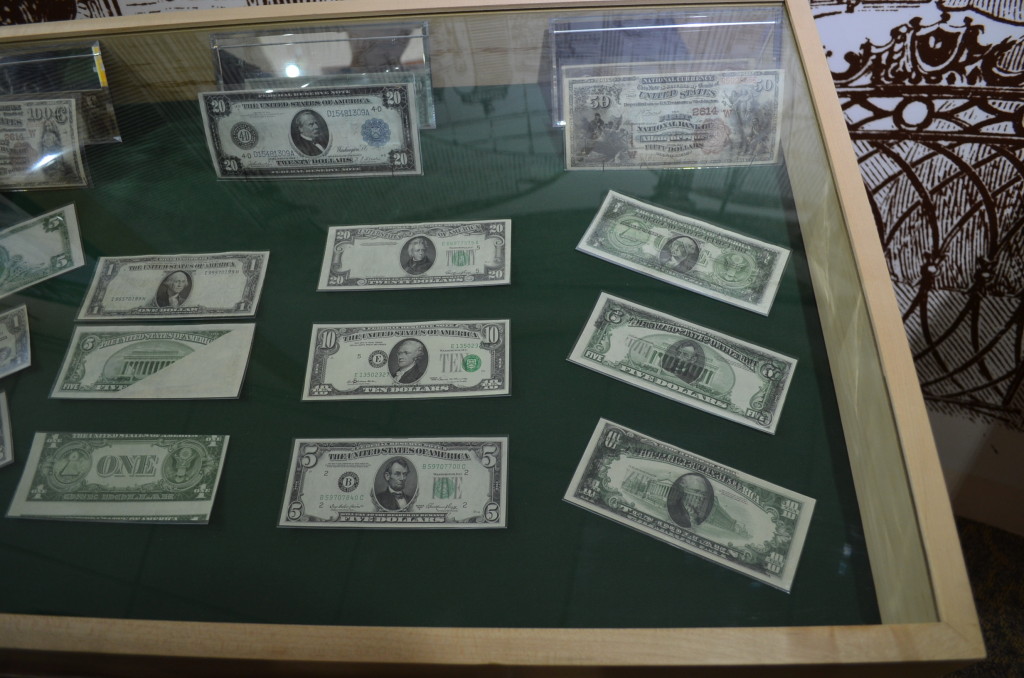
Recent Comments